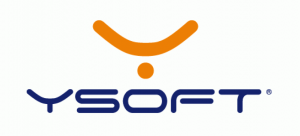Alma CG 2012 Innovation Barometer
10.04.2013Company: Amcham
The survey conducted by Alma CG revealed that companies are more and more anxious about their innovation financing.
The eighth edition of the Alma CG Innovation Barometer presents the results of a survey, in which 4,320 innovative companies from ten countries (Belgium, the Czech Republic, France, Canada, Hungary, Germany, Poland, Portugal, Spain and the United Kingdom) participated in 2012.
The aim of the survey was to point out the current essential topics concerning innovation, research and development (hereinafter the “R&D”) in the private sector, their financing and its impact on the growth of innovative companies, all of that with a view to the difficult economic context in numerous countries.
The involvement of Czech companies in this survey allowed for an international comparison of the situation with the local environment and presented the perception of the innovation funding problems by those companies. The results of the survey consequently provide, inter alia, a lot of interesting and usable information for legislators in research, development and innovation. The results also confirm the usefulness and efficiency of the R&D public aid system.
The survey focuses on three themes in particular:
- Innovation as the main strategy for future business growth and the related challenges
- Finding appropriate funding sources for innovation
- R&D tax relief, notably the reasons for the below-average use of this mechanism in the Czech Republic vis-à-vis other countries
Most European as well as Czech businesses cited innovations as their primary future growth strategy
European companies, including the Czech ones, are well aware that, in order to maintain their competitiveness, they need to innovate their portfolios of products and services on a continuous and long-term basis. This is the main reason why they believe that their future must be based on innovation, research and development.
In the conducted survey, most of the interviewed companies cited innovations of their products and services as their main strategy in the future growth of their business.
A surprising fact in the Czech context is that up to 42% of Czech companies raised their innovation investment amounts in 2012 according to the survey, as opposed to only 26% of companies from all countries. This means that the overall economic situation in the Czech society did not discourage the companies from raising their innovation investments. The total R&D expenditure in the Czech Republic is currently 1.86% of its GDP. This is also the average of all members of the European Union (1.9%).
The economic crisis, which still persists in most European countries, is not only having an impact on GDP growth but also makes those countries behave more austerely and cut their public expenditure. Thus the primary question for many of the companies interviewed in the survey is how to cover the cost of innovation such as wages and equipment or material investment.
In the European climate of budget restrictions, one in three interviewed companies is afraid of a future reduction in the available sources of public funding for innovations, while only 22% of companies were afraid of that in 2011. For example, Spanish and Portuguese companies anticipate a decline of up to 45% in the public funding for innovations. Thus finding appropriate funding sources for their own innovations is the main challenge for companies in all countries and sectors, as is the efficient management of innovations as well as their fast marketing.
In the Czech Republic, the respondents in the survey cited the provision of innovation funding (preferably the provision of a funding increase) as the most serious innovation-related challenge, followed by the efficient management of internal and external innovation-related sources, and finding appropriate technological partnerships as the third challenge.
Up to 40% of Czech companies are afraid of a reduction in the total amount of the public funding for innovations. Such concern may, in the short and medium terms, result in the reduction of investment in innovations or the relocation of investment to more attractive countries. At the moment, however, a great majority of Czech companies view the future of innovations in their businesses with optimism.
Companies become more reliant on public sources of innovation funding
According to the conducted survey, 53% of R&D investment by innovative companies in the compared countries is funded from internal company sources (innovation self-financing). The remaining 47% is funded from external sources, which include public external sources (R&D tax relief, national and European subsidy programmes), as well as private external sources (such as bank loans, investment through investment funds or innovation funding within the company group).
According to the data from ten countries, public funding makes up 26% of the total funding of business innovations on average, 10% of which being financed through tax mechanisms to promote R&D.
In view of the public funding of innovations, the mechanisms used by most companies catch the eye. The largest number of them used the R&D tax relief (58%), followed by subsidies and grants (54%) while almost 40% of businesses funded their R&D activities through bank loans. Thus the R&D tax relief is the most widely used instrument in the public funding of innovations in Europe.
A survey focused on innovation in the Czech Republic shows that internal company sources cover up to 70% of innovation funding. The remaining 30% is financed from external sources, notably through national and European subsidy programmes (14%). Other options used include bank loans (9%) and just below 7% of innovations are funded through the R&D tax relief. Thus the public funding of innovation in the Czech Republic makes up 21%.
At the moment, the most popular public sources of innovation funding in the Czech Republic include subsidies and grants (50% of the companies interviewed used them). Less than a half of innovative companies used the R&D tax relief (45%) while the same number of Czech businesses used bank loans. The survey also revealed the absence of venture capital in the R&D financial sources in the Czech Republic.
Why is the R&D tax relief not adequately used in the Czech Republic?
While direct public aid through subsidies and grants declines year by year and it is available to fewer and fewer companies, these can since 2005 use a very efficient instrument of the indirect public innovations funding, the R&D tax relief.
The R&D tax relief is a provision set out in paragraph 34, section 4 & 5 of the Act on Income Tax, which, since 2005, has enabled each company to deduct from its tax base 100% of its expenditure (cost) spent in the relevant taxable period on innovative and development projects. Such expenditure primarily includes personnel expenditure, i.e. wages and employer’s contributions required by law (in effect, most of the deductible expenditure). In addition, it is possible to include operational expenditure (material, energy), depreciation of tangible and intangible assets, expenditure on patents and certain certifications.
With the corporate income tax rate of 19%, this tax relief can save CZK 190,000 out of each CZK 1 million spent on R&D.
According to the overall results from ten countries, the R&D tax relief is seen as the main instrument to promote innovation (52%) and as the way for innovative companies to improve their competitiveness (30%). For 11% of companies, the R&D tax relief is a sort of protective measure enabling them to continue to innovate even in difficult economic conditions.
In Europe, the R&D tax relief is the most widely used instrument of the public funding of innovations. The main reason is that, unlike subsidies and grants, it is available to all innovative companies, irrespective of the type of R&D project (in state subsidy programmes or European grants, the company cannot be sure whether it will obtain the funding). Another benefit of the R&D tax relief is its low administrative burden vis-à-vis state subsidy programmes or European grants. The R&D tax relief can be used by a company repeatedly every year, without requiring a primary approval.
Most companies in the Czech Republic still use subsidies and grants in particular (despite the related administrative and time requirements), without asking themselves whether they could use the R&D tax relief for other non-subsidised projects and thus increase the amount of public funding of innovations.
Only 7% of Czech respondents view the R&D tax relief as the main instrument to promote innovation. Most local companies only view it as a partial refund of their R&D investments.
According to data available from the Czech Ministry of Finance, only 780 companies used the R&D tax relief, totalling CZK 8,339.7 million, in 2011. This is approximately one third of the companies that actually carry out innovations or R&D and that could most likely use this deduction. Thus there are more than 2,000 companies in the Czech Republic that carry out innovative projects and could profit from this fiscal mechanism. Why do Czech companies not use the R&D tax relief then?
Most of Czech respondents in the survey cited that this legislation did not apply to their activities or projects as the main reason. The companies often mistakenly believe that this tax relief does not apply to their activities or projects. However, Alma CG’s long-time experience confirms that the contrary is true, and thus the companies miss an attractive saving opportunity every year.
Even so, one cannot wonder because the essential prerequisite for the correct use of the R&D tax relief is the identification of innovative and development projects, and this is often a complicated task.
Projects that aim to manufacture new or significantly improved products, materials or technologies or to improve the currently used manufacturing processes and methods are present in numerous sectors. However, they are often hidden behind activities that are internally considered to be routines. Activities and projects to which the R&D tax relief is applicable are present in all production sectors as well as in numerous areas of services.
Up to 40% of the Czech companies interviewed believe that the essential pitfall in the correct use of the R&D tax relief is the preparation of required documents (in this context, the companies may have certain prejudices arising from their experiences in using grants and subsidies). Another pitfall is the correct definition of the R&D activities and projects (30%), which may often turn into a complicated matter, especially for tax or economic professions, which are responsible for this agenda. Most companies cited the unclear definition of eligible activities, followed by the impossibility to include external services in the R&D tax relief, as the greatest shortcomings of the current legislation.
To conclude, we can say that innovations are in the center of every progressive company’s strategy and innovation financing is its main concern, especially in the current difficult economic context. Therefore effective and transparent public financing mechanisms, both direct and indirect, are an absolute must and determine the future economic perspectives of each country.
On the other hand, many companies, including the Czech ones, do not always use all the opportunities that the local legislation offers them in terms of innovation funding. This is even more relevant in the Czech Republic, where the R&D tax relief is used only by one third of all eligible companies and it is often connected with wrong and incomplete information on its possible impacts.
You can find more detailed information on www.almacg.cz







